The words “full moon” in many languages

It is said that there are more than 6,000 languages worldwide (this is hard to imagine) and it is a fascinating concept to think, there are probably as many words for “full moon”.
Here we begin our little journey to the full moon. A few words about the fascinating quest of the greater purpose, that includes the full moon circulating through our lives. In layman’s terms and not always scientific (astronomy experts – don’t look too closely!). We would like to wish you illuminating moments. Enjoy!


It is said that there are more than 6,000 languages worldwide (this is hard to imagine) and it is a fascinating concept to think, there are probably as many words for “full moon”.
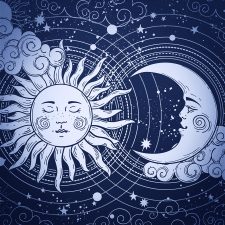
A full moon is when the Sun and the Moon are facing opposite, being in opposite direction from an Earth perspective.
This might feel astonishing if one imagines that the Moon is on one side, the Sun on the other and the Earth in between? Shouldn’t the Earth throw a shadow onto the Moon? Bingo – this is exactly what she does! But only when the Moon is exactly on the Earth orbit, the so called “ecliptic”. When this takes place, we speak of a lunar eclipse!

The Moon needs 27.33 days to circle around the Earth. Something that is also referred to as “sidereal time”. But because the Earth orbits the Sun, just like the Moon orbits the Earth, the Moon has to travel two further days in order to resume the same position to the Earth and Sun. This is then called the “sidereal time”. In order to determine the point of time of the reoccurring full moon, the sidereal time serves as basis.

We already know now that the moon month is mostly shorter than the calendar month, being on average approximately 29.5 days. If full moon falls on the first or second of a month, it is possible that another full moon occurs in the same month, for instance in July 2004:
Friday, 2 July 2004, 01:08:54 pm
Saturday, 31 July 2004, 08:05:06 pm
This event is also known as “blue moon”.

The answer is: “everywhere at the same time”. This refers to the so called Universal Time (UT) though, which is used for general astronomical events. We have already learnt that full moon is an astronomical event, where the moon, sun and the earth play a role by being in a specific position. So, full moon takes place at a specific time in the outer space. This point of time is specified by astronomers namely by the Universal Time.

There are multiple ways of approaching this question. If we look at it from a purely theoretical standpoint, we might be tempted to say that the full moon is infinitely short, since the phases of the moon are changing continuously. The moon is not yet quite full shortly before the full moon, and is already waning shortly afterwards.
However, there is a practical aspect that lets us quantify the full moon as a finite and measurable span of time: Since the Sun is significantly bigger than the Moon, its rays are able to reach just a little over half of the Moon’s surface. This means that the timespan in which the visible side of the Moon’s surface is irradiated (as seen from Earth) is longer than infinitely short.

Whether scientists, astrologers or esoterics, they agree on one thing: the moon influences earth and life on earth. For instance, it regulates the tides through its magnetism. Also continents feel the consequence of this magnetism and either raise or lower their position sometimes up to 26 cm.

In nature it is a known fact: for some animal species, mating takes place at full moon. However, the examples that can be found on this subject are rather simple. Full moon serves in some cases indirectly as the cause (for instance through the high water levels during the tides that the horseshoe crab uses to deposit its eggs) or also as the signal for both sexes of a species to begin at the exact same time to safeguard their future existence (a particular type of fly or also corals). It is understood that also wolves are led by full moon when it is time to mate.

… that people are looking for an argument at full moon or are especially happy …
… that if full moon is surrounded by a haze, a person dies …
… that you raise your hat three times to the moon (being a man) or you make a curtsey (being a woman), in order to protect yourself from misfortune until the next full moon …
… that whoever does not chink glasses with full moon at least once, does not deserve any happiness [Greek toast] …
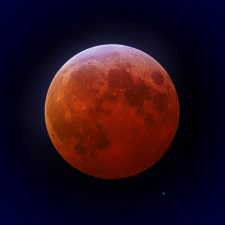
During a lunar eclipse, the Moon moves through the shadow of the Earth. Which means, that the Earth is positioned quite exactly between the Sun and Moon and casts its shadow onto the Moon. This is only possible at full moon and if some other requirements are met. Depending on whether the moon passes the partial or the core shadow of the Earth, we speak of a partial or total lunar eclipse.
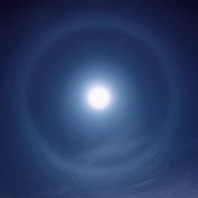
We would like to turn our attention to two interesting types of light apparitions around the Moon: halos and coronas. Both are optical phenomena in the atmosphere that, if looked at from a physical point of view, come about in different ways and also look dissimilar.
A halo (left picture) develops through refracting ice crystals and creates a clearly defined light ring around the Sun or the Moon, whereas the surface between the celestial body and the ring, almost appears to be empty. Light spots, light arches and pillars can also emerge.
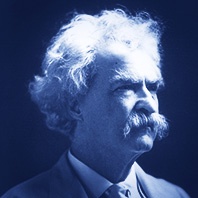
There is a famous quote by the American writer Mark Twain (1835–1910), taken from his satirical travel guide »A Tramp Abroad«, published in 1880: »Everyone is a moon, and has a dark side which he never shows to anybody.« He alludes to the astronomical fact that the Moon only turns one side towards the Earth, due to its synchronous rotation. The reverse side of the Moon remains hidden to us when observed from Earth.

The Spanish artist Salvador Dalí (1904–1989) was the most important advocate of surrealism in paintings. His pictures show fantastic and dreamlike scenes, which remain in your memory due to their expression and originality. We also asked ourselves, whether we would be able to discover the Moon in Dalí as well, just like in other paintings (e.g. by Marc Chagal, Paul Klee, Caspar David Friedrich, William Turner, Adam Elsheimer or Petrus van Schendel)? And after a little bit of searching, we managed to find something.

Bathing during the full moon or in the full moon light, is a fascinating experience, which one or the other has surely made. Two ways to interpret this is either bathing in the water at the full moon (outdoors or in the bath tub), or bathing directly in the moonlight (when the light of the Moon shines onto your skin, just like sunbathing).

»Moon blindness« (lat. morbus lunaticus) has nothing to do with the moonlight and luckily does not afflict humans. It is a disease of the eyes of horses, which recurs periodically. Due to an inflammation of the iris, which is caused by bacteria from food that has been contaminated by mice and rats, the cornea of the eye can cloud over. This leaves a bluish color, which gave the illness its name (even though the moonlight is not blue). If this inflammation continues to happen in an interval of months, it is possible that over the years it can lead to complete blindness of the animal. There is the option of an eye operation in the early stage of the illness, however, this is not straightforward.

This classic of the surrealistic movie scene (the original in French »Un Chien Andalou«) by Luis Buñuel and Salvador Dalí, evoked mixed reactions when released in Paris, in 1929. Even from a current perspective, the movie polarizes, whereby its artistic value remains indisputable.
The approximately sixteen minute act consists of a series of individual sequences, which show different encounters of men and women. There are dream-like, symbolic, and partly absurd scenes that do not create a plot in the classic sense. Yet, the movie projects some sort of development, however, it remains incomprehensible.
The American film studio DreamWorks SKG was founded by movie director Steven Spielberg, Disney head of animation Jeffrey Katzenberg and music producer David Geffen, in 1994 (the initials of the founders create the “SKG” in the company’s name). The opening credits of its movies, DreamWorks shows a boy, who sits on the waxing crescent moon while fishing and being surrounded by impressive cloud formations.

Although, one could easily presume that full moon influences the reproduction of many creatures, this has really only been proven for some species. One assumes this is the case with wolves, specific insects or crabs and also many humans vow not being able to do anything other than to look for the closeness of the other (or the same) sex at full moon. But absolutely certain are scientist only about one animal species that may not even be considered an animal by many: the corals. Here it has been established that reproduction is dependent on water temperature and moon light.
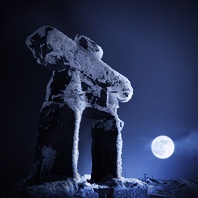
When taking a look at the Inuit [*] in the far north, you will find astonishing myths about the full moon. The Inuit live along the Arctic Ocean from the north east of Russia to Greenland and Canada, where coldness reigns. The culture is imprinted by an archaic consciousness, life is interwoven with legends that were never written down, due to harsh living conditions, but only passed down by word of mouth.
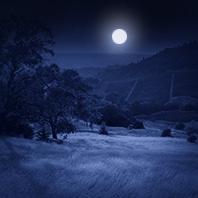
The Sonoma Valley is a valley in California, close to San Francisco Bay and is also referred to as “Valley of the Moon”. The original Native American Indians who inhabited this valley, called it “sonoma”, which means “Valley of the Moon” in their language. The Miwok and Pomps were Native American tribes that spread in the northern part of California and also settled in this valley. In a legend of the Miwok tribe, it says that the Moon rose from the Sonoma Valley and is there in complete harmony with nature.